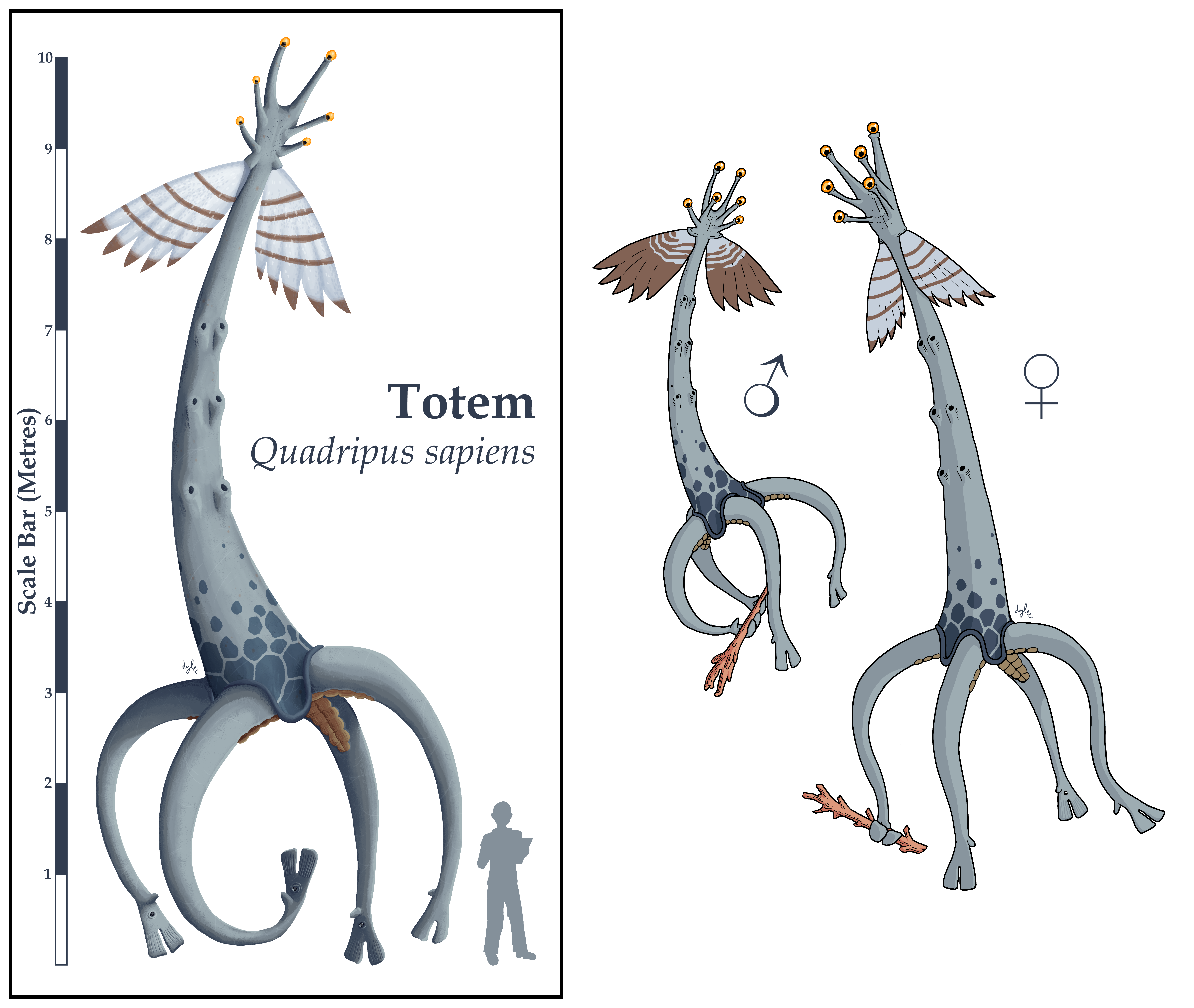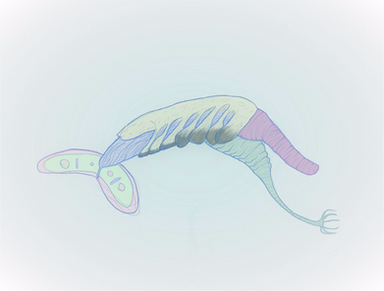HOME | DD
 Tree-Sparrow — Some Haplohelminthes
Tree-Sparrow — Some Haplohelminthes

#alien #astrobiology #cerberus #evolution #exobiology #life #scifi #space #speculative #worm #phylogeny #xenobiology #maxivita #haplohelminthes #extraterrestrial #sciencefiction #speculativeevolution #speculativebiology #speculativexenobiology
Published: 2022-05-21 19:03:15 +0000 UTC; Views: 3033; Favourites: 39; Downloads: 1
Redirect to original
Description
Haplohelminthes is one of the most ubiquitous phyla of maxivitans across the exoplanet Cerberus. These simple worms share many morphological similarities with flatworms on Earth. They possess a one-way digestive system and use a ciliated ventral epithelium to move. Ancestrally they possess two to three simple eyes, and a few pairs of sensory tentacles. Here, four species are shown, all of which belong to the subphylum Pantocephalia.Top left: Quadreptans psychrophilus.
Q. psychrophilus is a small, simple haplohelminth in the class Quadriculia which dwells within glacial melt pools in the polar reaches of the northern habitable band, Corona Habitabilis Borealis. They grow up to 5cm in length and are predators of microfauna. While diminutive, these organisms have been among the most important to the study of Cerberusian life. Due to their ability to withstand being frozen for extended periods of time, alongside their low energy requirements and rapid reproduction, they are an ideal lab species, and were the first species to be transported back from Cerberus to Earth for scientific study.
Top right: Haliotetra gregarius.
Another species in the class Quadriculia, H. gregarius is the largest species of haplohelminth native to the Geminus Mare in the equatorial habitable band, Corona Habitabilis Equatorialis. They grow up to 26cm in length and are frequently found in groups. They have a niche similar to a small ray or skate, being predators of small fauna on the benthos. Species in the class Quadriculia are commonly referred to as "sea squares".
Bottom left: Cordatolimax flavus.
The class Pachyhelminthes contains mostly terrestrial species. C. flavus is a noteworthy member of this class, growing up to 10cm long with a striking green colouration. Green is an uncommon colour on Cerberus and is primarily used aposematically. Indeed, C. flavus is highly poisonous to most predators. Living within the equatorial rainforests around the Geminus Mare, this species grazes on terrestral algae growing on the trunks of ferraphytes.
Bottom right: Medioceps bicolor.
M. bicolor is a member of the class Mediocephalia, the sister class to Pachyhelminthes (both comprising the clade Triadopsia). Native to the Hydra Mare in the southern habitable band, Corona Habitabilis Australis, this species has a well-developed nervous system and a true brain. They grow up to 7cm in length and primarily feed on detritus following the spring algal blooms. Their colour provides them with camouflage among the macroalgal fronds growing in their coastal habitat.

























